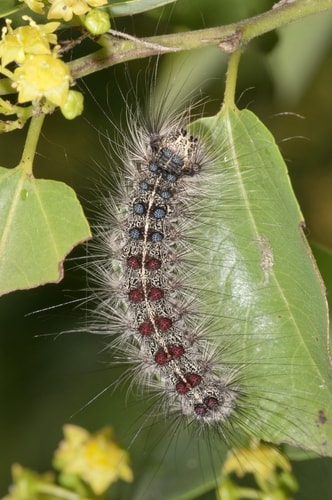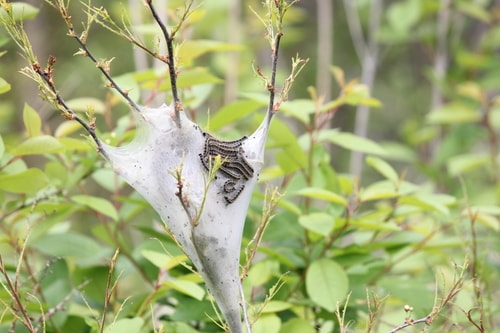When we take care of our trees and provide them the nutrients they need, they usually enjoy, long, healthy lives. Unfortunately, there are other factors that can impact our trees’ health. A big one is pests. Some insects become a problem for trees when they sap them of their nourishment and/or contaminate them with disease. The trees are then weakened and their lifespans considerably shortened.
Here are four pests that often infest trees in Ontario, and how to identify them:

- Gypsy Moth
Frequently invading birch, oak and poplar trees, the gypsy moth lays at least 100 eggs at a time. These eggs are concealed in the bark of the tree. When they hatch, the larvae move up to the branches and start feeding on the leaves. Because older larvae eat at night, they are often missed until the damage has spread.
Gypsy moth larvae have long, dark bodies covered with hair, with blue and red spots. Adult male moths are light brown and slim. Females don’t fly, and have bulkier, white-coloured bodies.
- Elm Leaf Beetle
In the spring, these beetles can be seen consuming newly grown leaves on elm trees. Their eggs, yellow in colour, are laid on the undersides of leaves. Once they hatch, the larvae begin feeding on the foliage. They eat most of the leaf, with only the surface of the leaf and the veins left. After a few weeks, these larvae transfer to the bottom of the tree to become pupae. When the adult beetle emerges, it, too, eats leaves, boring holes in them.
The elm leaf beetle larva is initially black, but as it grows, it changes to yellow with a couple of black lines. The adult beetle’s colour is olive green with a black stripe down the wings.

- Eastern Tent Caterpillar
This caterpillar mostly ravages cherry and apple trees. The eggs are laid surrounding small twigs. When they hatch, the caterpillars form a nest (resembling a tent) between the tree branches. Caterpillars feed on leaves and can completely ruin the foliage of a tree, and others nearby. Although this pest deforms trees, infestation rarely results in the tree’s death.
The caterpillars have black bodies with a white stripe, yellow lines, and blue spots, covered with thin hair. When they mature and become adult moths, they have red-brown wings with white stripes.
- Oystershell Scale
This scale-creating insect harms a wide variety of trees, including lilac, maple, poplar, and ash, to name a few. The eggs are laid and stay hidden under the body of a lifeless female. Upon hatching, the nymphs transfer to branches as they continually feed on the wood. Their bodies create a covering of wax as they grow. When they reach adulthood, the females stay in place, while the males have wings and leave behind their shells.
As nymphs, these insects have a yellow or orange colour, and look flat. When they mature, the bodies of the oystershell scale females become wider and curved at the back part, and the males’ bodies are smaller.
To stop pests from attacking your trees, tend to your canopy regularly. Inspect your trees for possible disease and any signs of potential infestation.
Learn more about protecting your trees from the tree care specialists at Great Northern Regreenery. Call us at (905) 775-7444 for quality tree services in Ontario.





